|
|
|
Sort Order |
|
|
|
Items / Page
|
|
|
|
|
|
|
| Srl | Item |
| 1 |
ID:
166104
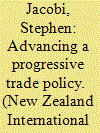

|
|
|
|
|
| Summary/Abstract |
Stephen Jacobi suggests the need to ensure that trade works for all by making it more inclusive and equitable.
|
|
|
|
|
|
|
|
|
|
|
|
|
|
|
|
| 2 |
ID:
113961
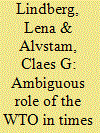

|
|
|
|
|
| Publication |
2012.
|
| Summary/Abstract |
The world trading system is characterized by a growing number of free trade agreements (FTAs). Limited progress in the negotiations at the multilateral level within the WTO has contributed to this development, inducing countries to seek faster, alternative ways to speed up liberalization, which make it possible to take advantage of preferential treatment with key trading partners. This article discusses what role the WTO should take with regard to FTAs in times of stalled multilateral negotiations and proliferating FTAs, and how FTAs can contribute to the multilateralization of regionalism. When results at the multilateral level are scarce, there may be a shift towards other alternatives in which the WTO is left out. This may force the WTO to function reactively, simply facing facts as an organization, rather than proactively, where it may play some role in shaping the FTA development. FTAs are not an entirely separate phenomenon from the WTO, since countries that negotiate FTAs play two roles. They are members of the WTO and as such are part of the work and negotiations of the organization. They are also part of trade arrangements that are limited to a smaller number of countries, and hence can negotiate against the interest of the entire multilateral organization. This article explores how these agreements can facilitate the work and negotiations of the WTO to regionalize bilateralism and multilateralize regionalism, here named the "sticky rice" approach. Various East Asian trade arrangements are used as empirical examples.
|
|
|
|
|
|
|
|
|
|
|
|
|
|
|
|
| 3 |
ID:
131492
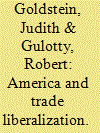

|
|
|
|
|
| Publication |
2014.
|
| Summary/Abstract |
Among scholars, delegation of power to the US president in 1934 is widely believed to have been a necessary requisite for tariff reductions in ensuing years. According to conventional wisdom, delegation to the president sheltered Congress from constituent pressure thereby facilitating the opening of the US economy and the emergence of the United States as a world power. This article suggests a revision to our understanding of just how that occurred. Through a close study of the US tariff schedule between 1928 and 1964, focusing on highly protected products, we examine which products were subject to liberalization and at what time. After 1934, delegation led to a change in trade policy, not because Congress gave up their constitutional prerogative in this domain but because presidents were able to target the potential economic dislocation that derives from import competition to avoid the creation of a congressional majority willing to halt the trade agreements program.
|
|
|
|
|
|
|
|
|
|
|
|
|
|
|
|
| 4 |
ID:
090287
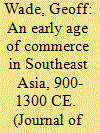

|
|
|
|
|
| Publication |
2009.
|
| Summary/Abstract |
One of the most influential ideas in Southeast Asian history in recent decades has been Anthony Reid's Age of Commerce thesis, which sees a commercial boom and the emergence of port cities as hubs of commerce over the fifteenth to seventeenth centuries, which in turn spurred political, social and economic changes throughout the region. But how new were the changes described in Reid's Age of Commerce? This paper argues that the four centuries from circa 900 to 1300 CE can be seen as an 'Early Age of Commerce' in Southeast Asia. During this period, a number of commercial and financial changes in China, South Asia, the Middle East and within the Southeast Asian region, greatly promoted maritime trade, which induced the emergence of new ports and urban centres, the movement of administrative capitals toward the coast, population expansion, increased maritime links between societies, the expansion of Theravada Buddhism and Islam, increased monetisation, new industries, new forms of consumption and new mercantile organisations. It is thus proposed that the period from 900 to 1300 be considered the Early Age of Commerce in Southeast Asian history.
|
|
|
|
|
|
|
|
|
|
|
|
|
|
|
|
| 5 |
ID:
062456
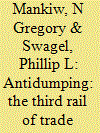

|
|
|
|
|
| Publication |
Jul-Aug 2005.
|
| Summary/Abstract |
Although few U.S. politicians will admit it, antidumping policy has strayed far from its original purpose of guarding against predatory foreign firms. It is now little more than an excuse for a few powerful industries to shield themselves from competition -- at great cost to both American consumers and American business
|
|
|
|
|
|
|
|
|
|
|
|
|
|
|
|
| 6 |
ID:
183776


|
|
|
|
|
| Summary/Abstract |
Foundational theories of trade politics emphasize a conflict between consumer welfare and protectionist lobbies. But these theories ignore other powerful lobbies that also shape trade policy. We propose a theory of trade distortion arising from conflict between consumer welfare and importer lobbies. We estimate the key parameter of the model—the government's weight on welfare—using original data from Venezuela, where Hugo Chávez used an exchange-rate subsidy to underwrite hundreds of billions of dollars of imports. Whereas estimates from traditional models would make Chávez look like a welfare maximizer, our results indicate that he implemented distortionary commercial policy to the benefit of special interests. Our analysis underscores the importance of tailoring workhorse models to account for differences in interest group configuration. The politics of trade policy is not reducible to the politics of protectionism.
|
|
|
|
|
|
|
|
|
|
|
|
|
|
|
|
| 7 |
ID:
116571
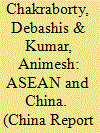

|
|
|
|
|
| Publication |
2012.
|
| Summary/Abstract |
ASEAN and China share a complex relationship in economic terms; while they collaborate in several spheres, conflict of interests is not uncommon either. The proposal for an ASEAN-China Free Trade Agreement (ACFTA) was floated in 2000, and the agreements covering merchandise trade, services trade and investment collaboration were signed in 2004, 2007 and 2009 respectively. ASEAN countries agreed to consider China as a market economy in the course of the negotiations and the ACFTA has resulted in several benefits for both parties, including tariff reduction on substantial number of product lines, considerable growth in merchandise and services trade volume, deepening of intra-regional production networks, regional cooperation on infrastructural development and so on. However, rapid growth of Chinese imports in ASEAN markets and expanding trade deficit generates apprehension in the grouping over potential domestic restructuring. Subisidies provided by the Chinese government to its domestic players also compound the problem. This article concludes that ASEAN countries need to augment their competitiveness through coordinated efforts on the one hand, and jointly negotiate with China to curb the disruptive effects of the latter's incentive programmes, on the other.
|
|
|
|
|
|
|
|
|
|
|
|
|
|
|
|
| 8 |
ID:
082370
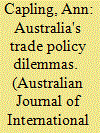

|
|
|
|
|
| Publication |
2008.
|
| Summary/Abstract |
In recent years, Australia has had a very active agenda for the negotiation of preferential trade agreements (PTAs) whose net economic benefits remain at best unclear. There has been a strong defensive element to some of this PTA activity but the Howard government also used PTAs to pursue non-economic objectives, such as the promotion of foreign policy and security interests. This article broadly outlines Australia's PTA policy and the problems and dilemmas that it has generated. More importantly, it looks ahead to consider likely scenarios for trade policy under the Rudd Labor government. Each of these scenarios has different implications for policy strategies and outcomes. This article concludes that while there could be significant pay-offs should Labor choose to pursue its traditional preferences for non-discriminatory trade arrangements, the world has changed considerably since the heydays of the multilateral trade system. A commitment to reinvigorating multilateralism will require strong political leadership, imaginative thinking, and creative diplomacy
|
|
|
|
|
|
|
|
|
|
|
|
|
|
|
|
| 9 |
ID:
100277


|
|
|
|
|
| Publication |
2010.
|
| Summary/Abstract |
This study revisits the debate on trade reform in Latin America, focusing specifically on what combinations of conditions were necessary and sufficient for very rapid trade liberalization. It departs significantly from two types of studies that have been previously used to examine Latin American trade reform: (1) those using large samples and linear statistics to test the mean effects of variables on levels of trade protection and (2) those isolating necessary conditions for rapid reform but using a small number of case studies. Using fuzzy-set qualitative comparative analysis and short case studies, the study considers trade policy in sixty-one administrations. It finds that a key motivating factor for rapid trade opening is potential resistance from protected industry; it further identifies several other important enabling conditions, such as hyperinflation, devaluation, and an unconstrained executive. In combination, these enabling conditions are sufficient to account for a high percentage of rapid reform episodes.
|
|
|
|
|
|
|
|
|
|
|
|
|
|
|
|
| 10 |
ID:
157119
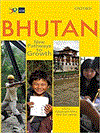

|
|
|
|
|
| Publication |
New Delhi, Oxford University Press, 2017.
|
| Description |
xxxvii, 467p.: tables, figures, boxeshbk
|
| Standard Number |
9780199474011
|
|
|
|
|
|
|
|
|
|
|
|
Copies: C:1/I:0,R:0,Q:0
Circulation
| Accession# | Call# | Current Location | Status | Policy | Location |
| 059281 | 381.5/MIT 059281 | Main | On Shelf | General | |
|
|
|
|
| 11 |
ID:
082368
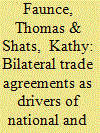

|
|
|
|
|
| Publication |
2008.
|
| Summary/Abstract |
This article compares controversial health technology provisions in two important United States free trade agreements with developed nations: Australia and with South Korea. It examines the multinational corporate forces behind the medicines and medical devices components of these texts and their likely impacts upon Australian trade negotiations with China and India. It also examines the implications of some recent changes to US trade policy for this area in subsequent bilateral deals such as that with Peru. This article argues it is important that the Australian government change policy and, like the present Congress in the United States, now systematically approach such impending trade agreements with a view to assisting the partners' regulatory frameworks to maximally enhance national and transnational benefit from their medicines and biotechnology industries
|
|
|
|
|
|
|
|
|
|
|
|
|
|
|
|
| 12 |
ID:
061222


|
|
|
|
|
| Publication |
Jan-Apr 2005.
|
| Summary/Abstract |
The Japanese government today is actively and strategically choosing among various institutional forums to deal with its trade partners, namely bilateral venues, multilateral settings, and even preferential regional arrangements. This ongoing high-profile institutional selection is somewhat unprecedented for Japan, and demands a review of the historical and analytical reasons that drive decisionmakers to select one forum over another. Overall, the Japanese case suggests that the aggregate trade forum choices are influenced both by the desire to institutionalize mechanisms for stabilizing a range of expectations and by the necessity of guaranteeing market access and protection of investment in the fastest time possible.
|
|
|
|
|
|
|
|
|
|
|
|
|
|
|
|
| 13 |
ID:
171589
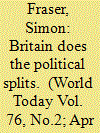

|
|
|
| 14 |
ID:
188804
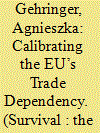

|
|
|
|
|
| Summary/Abstract |
As the energy crisis triggered by the Russian war against Ukraine vividly demonstrates, the EU suffers from inconvenient external dependencies. The trade dependence on China, the European Union’s main source of imports, could be an acute source of strategic vulnerability for the EU economy. Given the evident risks in maintaining close economic relations with authoritarian regimes, a policy change is needed to address the EU’s trade dependence, aimed not only at shifting economic incentives for businesses but also at reconciling sustainability goals with geopolitical priorities.
|
|
|
|
|
|
|
|
|
|
|
|
|
|
|
|
| 15 |
ID:
124723
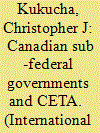

|
|
|
|
|
| Publication |
2013.
|
| Summary/Abstract |
Canadian provinces and territories have gained increasing relevance in matters of international trade over the last several decades. The possibility of a Canada-European Union Comprehensive Economic and Trade Agreement, however, marks the first time that sub-federal governments in Canada have been directly involved in specific areas of negotiations. The significance of this development, examined in this series of policy papers, can be organized under five overarching themes: 1) the negotiation, ratification, and implementation of foreign trade agreements; 2) the need to distinguish between process activity and actual policy outcomes; 3) the ongoing relevance of Canadian federalism; 4) the impact of non-governmental actors, especially civil society; and 5) the differing interpretations of academics, practitioners, business, and societal groups.
|
|
|
|
|
|
|
|
|
|
|
|
|
|
|
|
| 16 |
ID:
158044
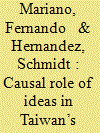

|
|
|
|
|
| Summary/Abstract |
While embracing trade policies that foster trade liberalization, Taiwan has clear protectionist policies covering its agricultural trade, which combine border measures with domestic support, and are closely modeled on the policies created by the European Union. The idea of multifunctionality of agriculture — and its link to trade policy — has created a normative framework whereby the agricultural markets have to be shielded in order for them to provide non-commodity attributes or public goods. This paper aims to explore the causal power of ideas (liberalization and multifunctionality) in the definition of Taiwan’s agricultural trade policy, by analyzing them from the perspective of historical institutionalism, and taking Taiwan as a case study. It is the institutionalization of the idea of multifunctionality that gives it an explanatory power toward understanding the ideational source of protectionism in agricultural trade.
|
|
|
|
|
|
|
|
|
|
|
|
|
|
|
|
| 17 |
ID:
086486


|
|
|
|
|
| Publication |
2009.
|
| Summary/Abstract |
Many attribute the enormous success of the Chilean economy - the best performing in the world outside Asia since 1990, with an average growth rate of 5.5% a year, and now invited to join the OECD, which it is expected to do later this year - to the market access FTAs have gained for Chilean exports. Chile has crafted its own approach to its development needs rather than picking ready-made "off-the-shelf" solutions
|
|
|
|
|
|
|
|
|
|
|
|
|
|
|
|
| 18 |
ID:
115250
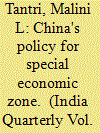

|
|
|
|
|
| Publication |
2012.
|
| Summary/Abstract |
Though India's SEZ policy owes its conceptual base to the successful Chinese SEZs' experience, hardly any attempt has been made to explain what made the latter so successful. In this article, we trace this phenomenal success to the well articulated and executed SEZ policy in China. Apart from this, the success of SEZs in China is also attributed to the various supporting mechanisms, both internal and external factors. On the basis of this analysis of different factors, we argue that SEZs cannot be expected to deliver optimum performance under ceteris paribus conditions; rather it requires careful identification and implementation of supportive factors, which may vary between countries, SEZs and/or between sectors within a given economy.
|
|
|
|
|
|
|
|
|
|
|
|
|
|
|
|
| 19 |
ID:
090113
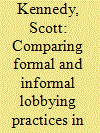

|
|
|
|
|
| Publication |
2009.
|
| Summary/Abstract |
The marketization of China's economy and the attendant need for a supporting regulatory framework have resulted in extensive lobbying by Chinese and foreign industry. The central party-state has adopted an ambivalent posture toward this development. On the one hand, the government has encouraged the development of industry associations, public hearings, and comment-and-response periods for draft laws and regulations to routinize public policy consultations. On the other hand, the central party-state is deeply concerned about the political consequences of permitting greater social activism, and hence, it continues to constrain the maturation of these same formal institutions and processes. As a consequence, informal lobbying practices, such as direct lobbying and manipulation of the media, have become more prominent vehicles for industry involvement in the policy process.
|
|
|
|
|
|
|
|
|
|
|
|
|
|
|
|
| 20 |
ID:
132325


|
|
|
|
|
| Publication |
2014.
|
| Summary/Abstract |
This article examines compliance with international laws prohibiting the intentional targeting of noncombatants in interstate war, specifically focusing on the role of third-party states in enforcement. We argue that the expectation of third-party coercion, when sufficiently high, can induce war participants to comply with this body of law. We identify the conditions under which combatant states will anticipate a high likelihood of coercion, demonstrating that third-party states are most likely to coerce combatants when they have both the willingness and opportunity to do so. Democratic third parties that value the rule of law and human rights possess the willingness to coerce war participants, while strong allies, trade partners, and intergovernmental organization (IGO) partners with existing ties to the combatant state have the opportunity to engage in coercion by linking combat-ant behavior to the provision of benefits or imposition of costs. Based on this logic, we hypothesize that war combatants who have ratified the Geneva/Hague Conventions prohibiting the intentional targeting of noncombatants during war are more likely to comply with the legal obligations included in those conventions when they interact with relatively strong democratic alliance, trade, and IGO partners. In a series of quantitative tests on a data set of all interstate wars from 1900 to 2003, we find strong statistical and substantive support for the role of third parties in inducing compliance with the law.
|
|
|
|
|
|
|
|
|
|
|
|
|
|
|
|
|
|
|
|
|